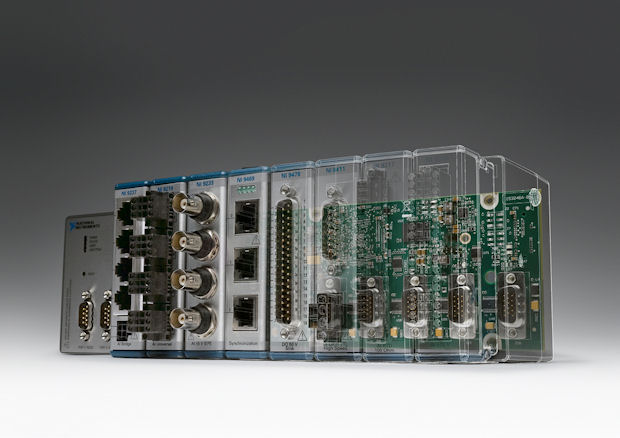Top 10 Reasons to Use NI LabVIEW for Designing Embedded Systems
Latest News
April 25, 2014
 Dear Desktop Engineering Reader:
Dear Desktop Engineering Reader:
Chances are if you have anything to with developing embedded control and monitoring applications, you know of NI LabVIEW system design software. Seemingly used everywhere, engineers and scientists use its graphical environment to design, prototype and deploy embedded control and monitoring applications for jobs as diverse as medical devices, robots and smart grid monitoring. So, why do so many designers of embedded systems rely on LabVIEW? In the “Top 10 Reasons to Use NI LabVIEW for Designing Embedded Systems,” National Instruments offers its thoughts on the subject. Let’s take a look at a few of the reasons NI suggests.
First up is that NI says you can prototype your embedded systems faster with LabVIEW’s graphical design environment. The reason for this is that you develop your control or measurement applications using drag-and-drop graphical icons and pipe them together rather than typing in line after line of text. As well, LabVIEW comes with prewritten libraries packed with hundreds of common functions for things like control, analysis, logging and reporting. And LabVIEW is an open environment, so it integrates with the IP (intellectual property) you’ve already developed with things like ANSI C and HDL or MATLAB/Simulink .m file scripts.
That last point segues to another of NI’s reasons: LabVIEW offers a platform approach to embedded system design. What that means for you is that you can use one tool to design, develop and deploy your entire hardware and software system — user interface, data logging, control logic, system monitoring, etc. — and one hardware architecture to implement your system.
This platform approach is possible because you can pair LabVIEW with NI’s reconfigurable I/O (RIO) embedded system hardware and plug-in data input/output modules. The idea here is that you can integrate off-the-shelf hardware modules with a LabVIEW-programmable controller. The thing to wrap your head around is that this flexible combination enables you to design complete “custom” control and monitoring systems without designing custom hardware. It’s the software and the input/output modules you select that create the customization of your control and monitoring application system.
Take NI’s new NI cRIO-9068 (compact RIO) software-designed controller as an example. This scalable unit runs a real-time operating system and has a 667MHz dual-core ARM Cortex-A9 processor and the Xilinx Artix-7 FPGA (field-programmable gate array), which is capable of high-speed processing. “Software-designed” means that you use LabVIEW to program the hardware, especially the FPGA, to do what you want it to do.
For its part, the LabVIEW-programmed FPGA configures and provides interfaces to various I/O modules, such as analog inputs and counter/timers, available through NI. The modules offer direct connectivity to sensors and actuators as well as built-in signal conditioning and isolation. Consequently, by switching out or adding new I/O modules and developing the needed LabVIEW code, you can enhance or reconfigure hardware functionality during the prototype phase or deploy your code to a rugged or board level product. For that matter, later on you can completely reuse the hardware across multiple projects.
The “Top 10 Reasons to Use NI LabVIEW for Designing Embedded Systems” basically comes down to two words: Flexibility and Productivity. Well, three: Efficiency. LabVIEW’s adaptability to your vision coupled with NI’s reconfigurable hardware means that you can design, simulate, debug and deploy an embedded control and monitoring system quickly. You can read all of the “Top 10 Reasons to Use NI LabVIEW for Designing Embedded Systems” at the far end of today’s Check it Out link.
Thanks, Pal. – Lockwood
Anthony J. Lockwood
Editor at Large, Desktop Engineering
Go here read the “Top 10 Reasons to Use NI LabVIEW for Designing Embedded Systems.”
Subscribe to our FREE magazine, FREE email newsletters or both!
Latest News
About the Author
Anthony J. Lockwood is Digital Engineering’s founding editor. He is now retired. Contact him via [email protected].
Follow DE






